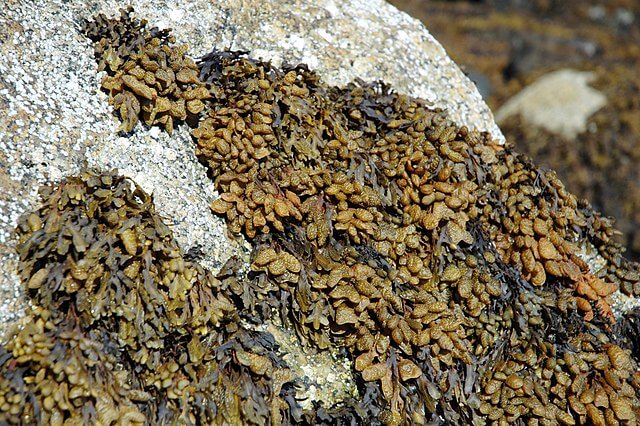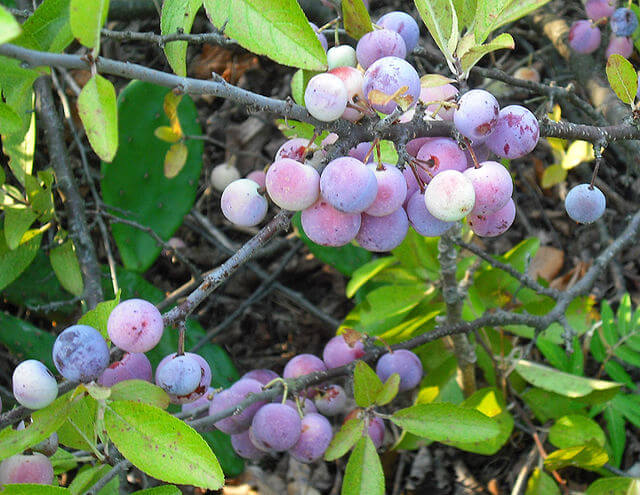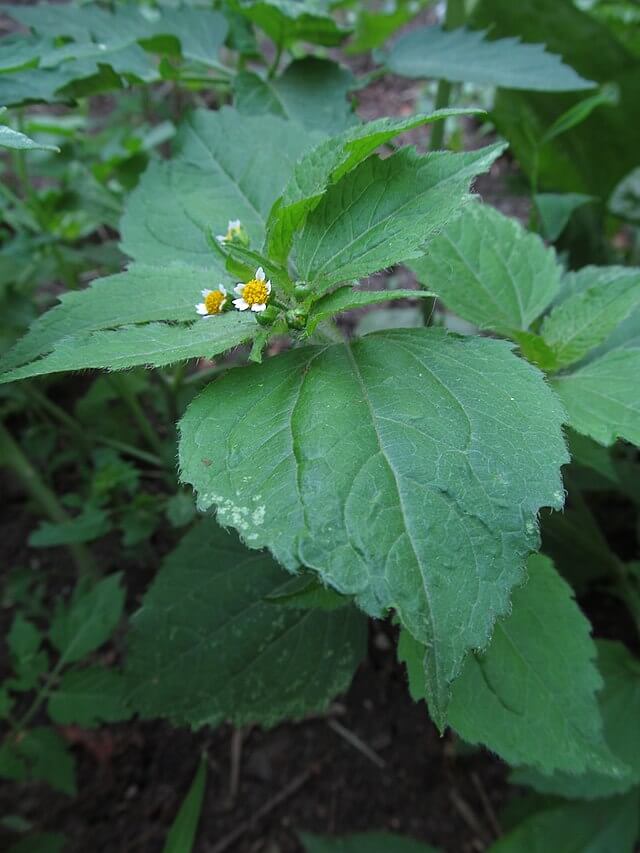Pine Needles: For You and Your Animals

When you see evergreen trees is your first thought to consume them? Probably not. However, you may want to reconsider as pine needles are not only edible, but also medicinal for you and your livestock. Mentioned in memoirs and historical writings, pine needles – and more specifically, pine needle tea – were used […]
How to tell the difference between Henbit and Dead Nettle

Both members of the mint family and Lamium genus, henbit (Lamium amplexicaule) and dead nettle (Lamium purpureum) are common finds on winter walks and spring hikes. They have a similar appearance, but as you look closer, there are certain features that will help you tell them apart. Both have long been valued as wild edibles, […]
Spearleaf Stonecrop in the Pacific Northwest

Spearleaf stonecrop (Sedum lanceolatum) is a yellow flowering succulent plant found in the Pacific Northwest and across the western United States. Spearleaf stonecrop grows in exposed, rocky, mountainous habitats at moderate to high elevations, up to 4048 meters in the Rocky Mountains. Spearleaf stonecrop is native to western portions of the United States and Canada. […]
Sea Lettuce: An Abundant Coastal Algae

One of the most commonly available seaweeds a forager can find is Sea Lettuce (Ulva lactuca). A member of the Ulvaceae family, sea lettuce has been used for centuries as food, medicine, and even as an additive to cosmetics. It is native to seas around the world and can be found in all temperate and […]
Spiral Wrack: The Coastal Olive

Fucus spiralis, aka Spiral Wrack or Twisted Wrack, is brown alga belonging to the Fucaceae family. As a member of this powerhouse family, it is a prized and plentiful plant for coastal foragers. Spiral wrack is native to the Atlantic shores of the UK, as well as the northeastern shores of North America. This wrack […]
Meadow Salsify in the Pacific Northwest

Meadow salsify (Tragopogon pratensis) is a yellow ornamental biennial wildflower found in the Pacific Northwest and across much of the United States. You can normally find meadow salsify on roadsides, fields, and disturbed sites, usually in areas that are slightly moist. Meadow salsify is native to Europe, Central Asia, and Turkey. Not much is known […]
Silverweed: Ancient and Enigmatic

Silverweed, also known as Goosefoot or Silvery Cinquefoil, is an edible plant surrounded by contradiction. It is claimed to be native to both North America and Asia, and no one is quite sure which is true—but it has popped up on several continents around the world. On top of that, this delectable weed has two […]
Turkish Washcloth: A Textured Seaside Treat

Mastocarpus papillatus, or Turkish Washcloth, is an edible alga that gets its name from its bumpy surface, as the scientist who discovered this undersea delight was reminded of the special washcloths found in Turkish baths. Foragers on America’s west coast will find this seaweed growing in abundance, especially in the colder waters of the Pacific […]
Yellow Salsify in the US

Yellow salsify (Tragopogon dubius) is a yellow flowering plant that’s commonly found in most of the continental US except for the far Southeast. Yellow salsify is a species of salsify native to southern and central Europe and western Asia and found as far north and west as northern France. Yellow salsify was introduced to North […]
Peppermint Twist: The Roots of a Favorite Holiday Flavor

The holiday season is full of all sorts of iconic foods and flavors, from Christmas oranges and braided breads, to latkes and gelt at Hanukkah, to holiday feasts featuring favorite dishes on tables around the world. Perhaps the best-known taste of the winter holidays, at least in the West, is peppermint. It infuses sugary candy […]
Beach Plum: A Coastal Key to Our Ancestry

The beach plum, Prunus maritima, is a unique fruiting shrub native to America’s northeastern shoreline. A member of the Rosaceae (rose) family, and also known as the seaside or sand plum, early settlers and Native Americans relied on the plant’s tart fruits as a late fall food source. Since it is a perennial shrub, our […]
Dulse: A Seafaring Superfood

Growing in cold coastal waters from the eastern shore of Canada to New Jersey, USA, dulse (Palmaria palmata) is a nutrient dense saltwater alga. This seaweed, also known as red seaweed and dillisk, is notable for is dark reddish hue and its unusual preferred growing place—on submerged rocks. Dulse prefers to grow in areas with […]
Prairie Sunflower, Beautiful Abundant Blooms

Sunflowers are perhaps one of the most well-known edible flowers. The edible seeds from the Common Sunflower are well known and commercially available. However, you may not know that another member of the sunflower family, the Prairie Sunflower (Helianthus petiolaris), is also widely spread across North America and just as edible. This beautiful plant species […]
Prunella Vulgaris, the All-Healing Plant

What is Prunella Vulgaris? Prunella vulgaris is a perennial wildflower that is also most commonly known as Heal All or Self Heal. This plant grows in multiple regions across the globe. Self Heal is considered to be a native plant to North America, in which its native habitats include moist fields, pastures, roadsides, and the […]
Trailing Wild Bean: Coastal, Coveted, and Elusive

It’s odd to think of picking beans at the beach, but that’s exactly where you’ll find Strophostyles helvola, aka trailing wild bean, amberique bean, or annual wooly bean. Trailing wild bean grows in many soil types, but it thrives in the dry, sandy soil and direct sunlight of coastal beach dunes. A legume and member […]
Purple Salsify in the US

Purple salsify (Tragopogon porrifolius) is a flowering plant that’s commonly found in the Western and Northeast US. Purple salsify grows similarly to other root vegetables like parsnips and carrots, and is found in the wild, and is cultivated for its roots. Purple salsify is native to Southeast Europe and North Africa and it has been […]
Bladderwrack: The Secret Skin Cream of the Sea

Coastal foraging presents more options than the animal options that come to mind like mussels and clams, and your plant intake isn’t limited to only seaweed. A member of the Fucaceae family, Bladderwrack (Genus: Fucus) is a fairly short, forking algae. Also known by names such as rockweed, black tang, bladder fucus, and rockwrack, it […]
Galinsoga, the Intrusive, Astringent Edible Weed

Introduction to Galinsoga parviflora Galinsoga is an annual plant that is known for rather an infamous reason: how invasive it is. It is rare to have a plant commonly referred to by its scientific name, but galinsoga has multiple other names, including guasca, mielcilla, gallant soldier, quick weed, and potato weed. Galinsoga grows in disturbed […]
Curly Dock: Peculiar Yet Useful

An Introduction to Curly Dock: Curly Dock or as it is scientifically known as Rumex crispus is a flowering plant which is perennial in nature. It has various other names including yellow dock and even curled dock. Places where you can spot Curly Dock: You may find it on roadsides, fields, shorelines, meadows and […]
Asparagus: A Delightful Household Plant

An Introduction to Wild Asparagus: Asparagus officinalis or Wild Asparagus is an edible household hlant which is consumed in most American Households. It is commonly eaten as a vegetable and thus is grown as a crop likewise. You may see it in various American dishes as well where it accompanies the main star of […]
